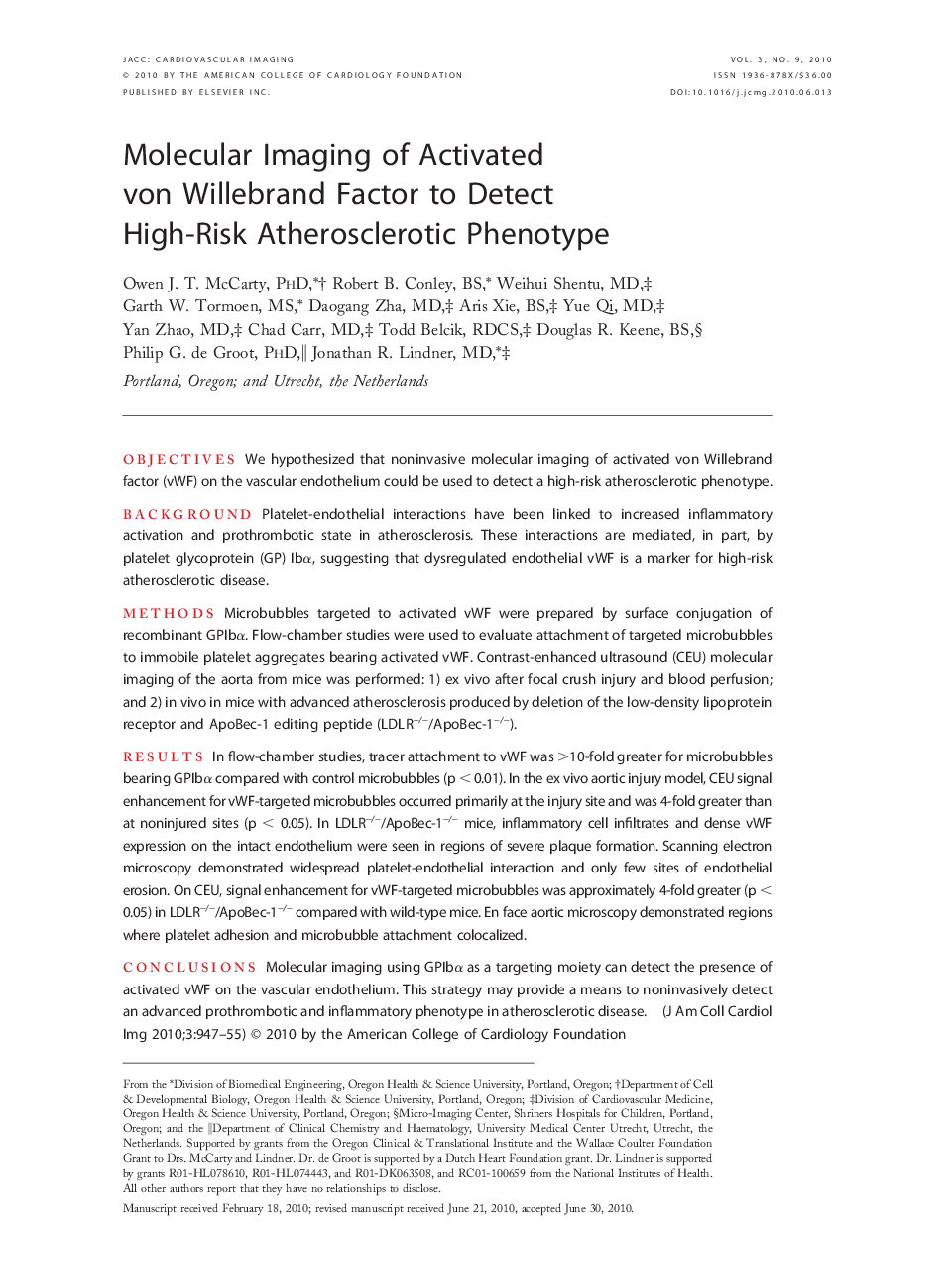| Article ID | Journal | Published Year | Pages | File Type |
|---|---|---|---|---|
| 2939020 | JACC: Cardiovascular Imaging | 2010 | 9 Pages |
ObjectivesWe hypothesized that noninvasive molecular imaging of activated von Willebrand factor (vWF) on the vascular endothelium could be used to detect a high-risk atherosclerotic phenotype.BackgroundPlatelet-endothelial interactions have been linked to increased inflammatory activation and prothrombotic state in atherosclerosis. These interactions are mediated, in part, by platelet glycoprotein (GP) Ibα, suggesting that dysregulated endothelial vWF is a marker for high-risk atherosclerotic disease.MethodsMicrobubbles targeted to activated vWF were prepared by surface conjugation of recombinant GPIbα. Flow-chamber studies were used to evaluate attachment of targeted microbubbles to immobile platelet aggregates bearing activated vWF. Contrast-enhanced ultrasound (CEU) molecular imaging of the aorta from mice was performed: 1) ex vivo after focal crush injury and blood perfusion; and 2) in vivo in mice with advanced atherosclerosis produced by deletion of the low-density lipoprotein receptor and ApoBec-1 editing peptide (LDLR–/–/ApoBec-1–/–).ResultsIn flow-chamber studies, tracer attachment to vWF was >10-fold greater for microbubbles bearing GPIbα compared with control microbubbles (p < 0.01). In the ex vivo aortic injury model, CEU signal enhancement for vWF-targeted microbubbles occurred primarily at the injury site and was 4-fold greater than at noninjured sites (p < 0.05). In LDLR–/–/ApoBec-1–/– mice, inflammatory cell infiltrates and dense vWF expression on the intact endothelium were seen in regions of severe plaque formation. Scanning electron microscopy demonstrated widespread platelet-endothelial interaction and only few sites of endothelial erosion. On CEU, signal enhancement for vWF-targeted microbubbles was approximately 4-fold greater (p < 0.05) in LDLR–/–/ApoBec-1–/– compared with wild-type mice. En face aortic microscopy demonstrated regions where platelet adhesion and microbubble attachment colocalized.ConclusionsMolecular imaging using GPIbα as a targeting moiety can detect the presence of activated vWF on the vascular endothelium. This strategy may provide a means to noninvasively detect an advanced prothrombotic and inflammatory phenotype in atherosclerotic disease.
